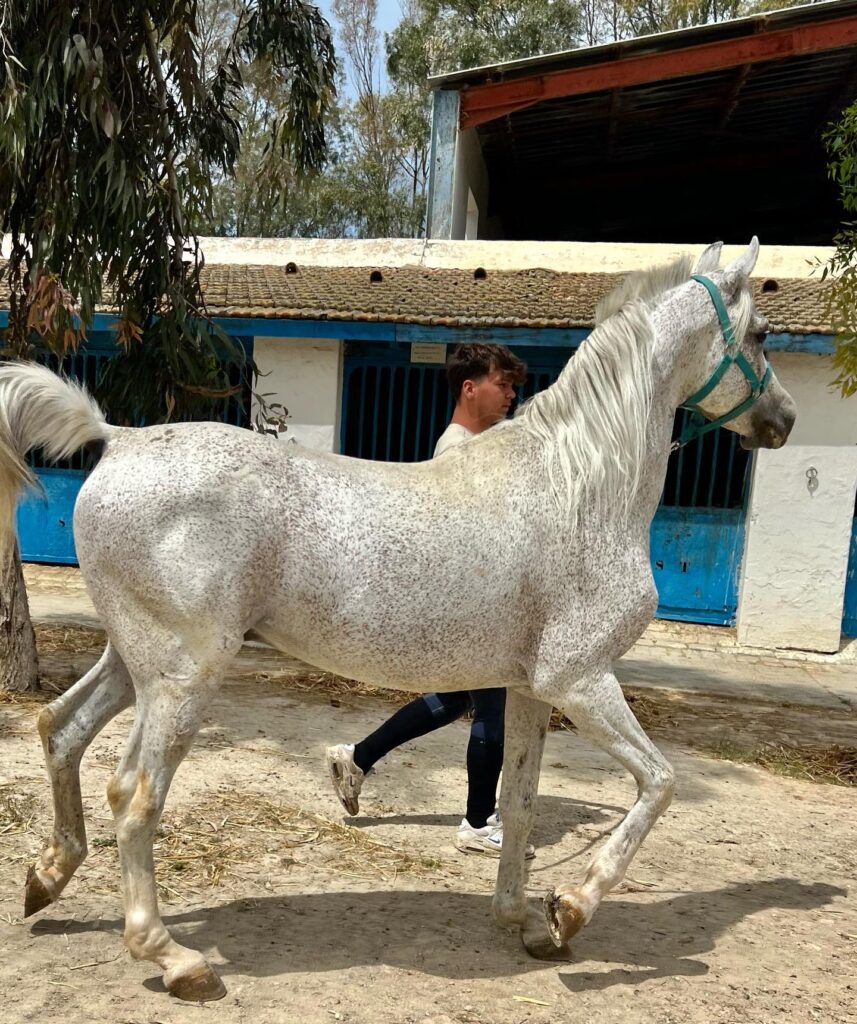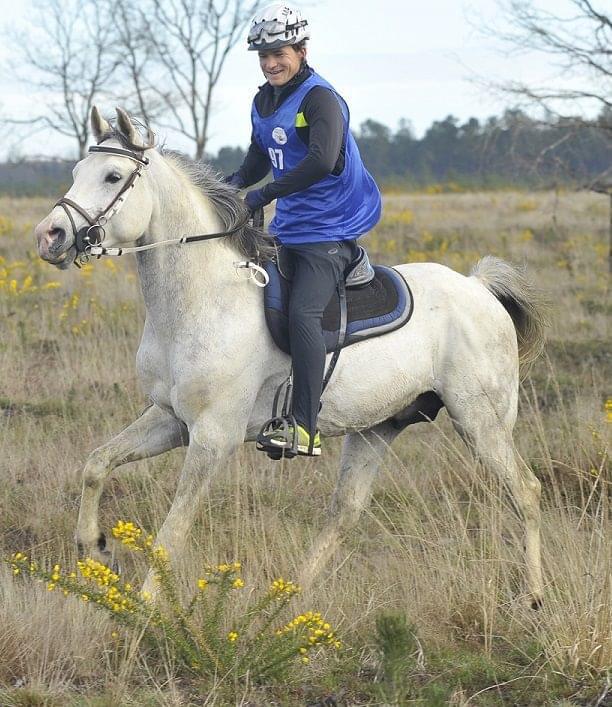The sire line project
Over the past couple of years, I have been working on several projects with likeminded friends and preservation breeders from around the world. These projects seek to complete and expand the original mission of DOW, which has always been to raise awareness about the true Arabian horse, its people, history and heritage, in a way that builds bridges between the East and the West.
One of these projects is my sire line project. It first germinated in my head some years ago, when a quick survey made me realize that there were only 10 asil sire lines left in the West. Since then a few more were added, thanks to importations from Syria.
Sire lines can vanish particularly quickly. Once a few stallions from one sire line become fashionable, everybody uses them, then more people use their sons, horses from other sire lines don’t get as much of a chance, and disappear within two or three generations. This is what is currently happening in the general (ie, non-asil) Arabian horse population, with Marwan Al Shaqab and WH Justice, both from the Saklawi I sire line through Nazeer, dominating the breed. Within the sub-population of the asil Arabians, the Saklawi I sire line is equally dominant, while the ten others are represented by male horses in the single or double digits.
Meanwhile, something else has been dwindling even more rapidly: the cost of freezing and storing frozen equine semen. So I decided to acquire or produce frozen semen from as many of the endangered Western asil sire lines as possible, in addition to semen from the asil sire lines in the homeland of the Arabian horse. The idea is to avail it for use by serious preservation breeders around the world, in addition to my own breeding program. I am also thinking about ways to sustain this endeavor for the benefit of future generations, once my time on this planet is up, a bit in the way of the Svalbard Global Seed Vault. So far — and it’s just a beginning — I have stored frozen semen from the following sire lines:
— *Taamri, desert-bred Ubayyan stallion, ca. 1950. Origin: Arabia (Kingdom of Saudi Arabia), then the USA.
— Al-Aawar, desert-bred Hamdani Simri stallion, ca. 1970. Origin: Arabia (Syria), then France.
— Dahman al-Oud, desert-bred Dahman Shahwan stallion, ca. 1890. Origin: Arabia (Bahrain, where it’s the only sire line), then the UK.
— El Managhi, desert-bred stallion, likely Ma’naqi Sbayli, ca. 1920. Origin: Arabia (Syria), then Algeria, then Tunisia.
Hopefully, if all goes well, in 2024 I will have frozen semen from three more:
— Ghadir, desert-bred Saqlawi Jadran, ca. 1850. Origin: Arabia, then Egypt, then the UK, then the USA.
— *Muson, desert-bred Kuhaylan Musinn, ca. 1900. Origin: Arabia (Syria), then the USA.
— Siglavy Bagdady, desert-bred Saqlawi Jadran, ca. 1900. Origin: Arabia, then Hungary.
Of course, in doing so, I try to select the best individual horses available from a given sire line. This is about perpetuating quality as much as it is about safeguarding genetic diversity.
Another aspect of the sire line project consists of identifying relationships between asil sire lines by leveraging recent research breakthroughs in equine genomics. This is done by comparing the Y-chromosome DNA markers of stallions from both related and unrelated sire lines. Comparing the Y DNA of stallions related on paper allows one to confirm or infirm sire line information as recorded in early studbooks and historical sources. Comparing the Y DNA of stallions of stallions unrelated on paper allows one to test some hypotheses about these horses being related.
If you want to join me in that collaborative project, and support either the freezing of semen from more sire lines, or the Y-DNA comparison (or both!), just drop me a line at ealdahdah@hotmail.com
Below, my own Rhoufi, born 2003, Kuhaylan al-‘Ajuz, the last asil stallion from the sire line of El Managhi, and one of the stallions whose semen was frozen as part of this project. Photo taken in Tunisia by Skander Karoui prior to his importation to France, where he is staying with Arnault Decroix.

Below: Dahjani Al Arab, born 2008, Kuhaylan Da’jani, also part of this project. Imported to France from Syria in 2009, owned by Arnault Decroix.

I am still wrapping my head around this, so this definitely paraphrasing, but what I am understanding here is– per your original count, 10 sirelines in Western asil breeding:
1 Ghadir
2 Saklawi I — possibly going back to older Abbas Pasha stallions (Zobeyni or Ghadir)
3 Jamil El Kebir — ditto to Saklawi I
4 El Deree
5 *Deyr
6 *Muson
7 *Furtha Dhellal
8 *Jalam Al-Ubayyan
9 *Taamri
10 Siglavy Bagdady VI
And you have added some additional sirelines in Western breeding to your updated count:
11 Al-Aawar
12 Dahman al-Oud
13 El Managhi
I would assume that there are a couple of others in the French Syrian bloodlines that could be added to the mix:
14 Awaad
15 Mahrous
Correct. Thanks for clarifying. Ten asil/AK sire lines at the time of the first tally, in 2009-10, and a few more since thanks to the importation of stallions from Syria. There are additional lines from Algeria/Tunisia as well, that are asil, but not recognized by the Asil Club or Al Khamsa, e.g., Bango, Nasr, Dynamite II, Telmese, etc.
Glad to be useful!
I think this is a really important and vital project, especially with the emerging research on y chromosome haplotypes and their variations.
Pulling up the data from Remer et al. 2022, Saklawi I is Ao-aA1a1, Jamil El Kebir Ao-aD2, and Zobeyni (via Wazir) Ao-aA1a*. My understanding is that these are three different branches of the Ao sireline, with Saklawi I and Zobeyni more closely related. There is no Ghadir representative in the data, that I can see – it would be very interesting to have a couple of horses from that line tested. There’s only one Jamil El Kebir horse in the dataset and one Zobeyni, so I would like to see a few more from those lines as well, to confirm the original finding.
May you have success freezing more stallions – maintaining diversity within the breed is so important, be it tail male, tail female, or mid-pedigree, and we have the technology to do it now.
I think the fact that they’re different enough to have some variation in their designations is indicative that they’ve diverged enough to be unique in terms of breeding lines and diversity. Saklawi I and Zobeyni being so similar, though, makes me wonder if they’re perhaps a much more recent branching.
Wonderful! Such a worthwhile endeavor, and many thanks to you for starting it!
Excellente idée, très utile pour la conservation de ces lignées paternelles, vous avez tout mon soutien pour cette aventure excitante.
Bango, Nasr, El Managhi, El Deree, Mahrous, Awaad à la maison. Je crois que j’ai tout compté. 2 sont en danger chez nous: Bango (Shueyman Redjem, 17 ans, et son fils Aydin beni Sakr qui est à vendre), et la ligne de Nasr encore présente via Esmet Ali (mais son représentant est à vendre) mais perdue via Iricho. À ma connaissance, celle de Bango est encore présente via Dellil et Qamar el Lail en Algérie, et Redjem et Aydin chez nous. Je ne connais pas d’autres représentants de cette sireline que ces 4 là (donc 2 jeunes et 2 étalons d’âge).
Oups, Saklawi I et Raad aussi
Rhoufi is not the last. Ibreez beni Sakr (2019) is a representant of El Managhi’s sireline.
Telmese always exists in its asil form (Koheiba de ste marie and he has an asil son).